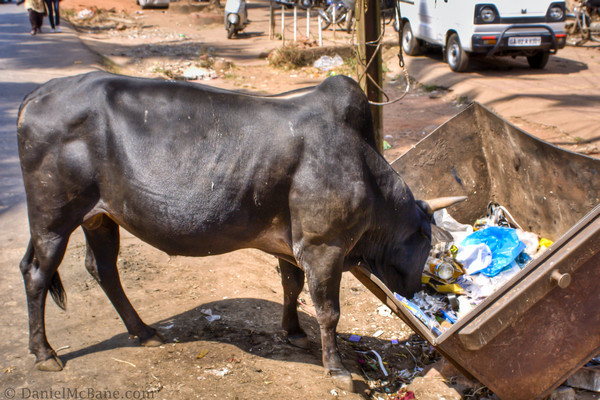
Abandoning cattle means sentencing them to acute suffering and painful death. Animal cruelty should be stopped at any cost with strict penalties to the defaulter
According to some locals, a woman came in from somewhere in late February and released three cows and two calves in the forests abutting Bohrakote village in Ramgarh block in Uttarakhand’s Nainital district. They had disappeared by the time I arrived at the place. Nevertheless, I believe the locals. Driving out cattle after these stopped giving milk is becoming shockingly common, and not just in Ramgarh but everywhere in India. I have seen an increasingly large number of homeless cattle wandering about in streets and highways while travelling by road through western Uttar Pradesh and Uttarakhand.
The evil is not new but has grown rapidly after the banning of cow slaughter in most States, the clamping of restrictions on cattle trade and transportation, and attacks on people suspected of carrying beef or cattle for slaughter. Many of the animals that were sold to butchers are now driven out. I am against the killing of cows, as I am to the killing of all living beings. Abandonment is tantamount to killing, as cattle that are driven away die slowly amidst terrible suffering. Used to being kept in sheds, protected from the elements, and fed regularly, they suddenly find themselves in totally unfamiliar surroundings. Those that somehow find their way back to their old homes are often beaten mercilessly with lathis and pushed out.
Exposed to rain and cold — which is bitter in many parts of India, particularly in the hills — the wind and heat, they fall ill and die painfully. Farmers chase them away if they get into their fields. Unused to finding food for themselves, and with relatively few bothering to feed them, many of them eat pieces of plastic, with consequences that require no elaboration. A large number of them fall prey to leopards.
Even when a cow gives milk, the bulk of it is consumed or sold, depriving her calf of his/her fair share. The issue, however, does not generally arise in the case of male calves who are thrown out almost immediately after birth and left to die. People have little use for bulls, once much in demand for pulling ploughs and/or carts, following increasing use of tractors and mechanisation of agriculture, and the growing spread of automotive transportation. One hears that people abandon cattle not out of cruelty but because they cannot afford to maintain them after they have stopped yielding milk. This is true in many cases but not in many others where the motive is not spending money when it can be avoided — however cruel the consequences. Even those who take the lack of means plea, rarely take the trouble of taking their cattle to the existing shelters — good, bad and indifferent. All this is not surprising. History is replete with examples of unspeakable cruelty inflicted by humans on their fellow beings. It is infinitely worse in the case of animals who, to all intents and purposes, have been excluded from the universe of human morality. The latter’s safeguards against violence, cruelty and murder that apply to humans are not for them. The emerging movement for the recognition of animal rights is as yet not strong enough to make a significant difference.
There are, doubtless, exceptions. In Ramgarh, Bhawan Singh Dhaila, an ex-serviceman, lovingly looked after his cow, Kali, long after she had ceased giving milk and buried her with proper ceremony after she died. In Ramgarh, again, a young neighbour, deeply moved by the plight of abandoned cattle, wants to build a shelter to house as many of them as possible.
Bhawan Singh’s is a shining example. The young man’s effort is commendable. Maltreatment and abandonment of cattle, however, is so widespread that Governmental effort is needed for establishing an adequate number of cattle shelters, making for condign punishment for abandoning cattle and launching an effective campaign underlining the utter immorality of the practice, which also affects humans adversely. For example, abandoned cattle, wandering on the outskirts of human settlements, attract leopards and aggravates the growing human-animal conflict. Government personnel, however, cannot go around inspecting whether cows are treated well wherever they are kept. For this and other issues related to animal well-being, one would require thousands of committed volunteers affiliated with animal welfare NGOs. They do not exist now. People must join their ranks instead of those of Gau Rakshaks who have not quite covered themselves with glory.
(The writer is Consultant Editor, The Pioneer, and an author)